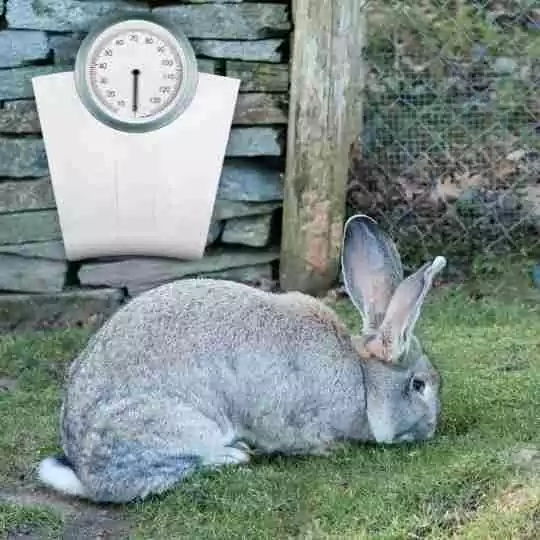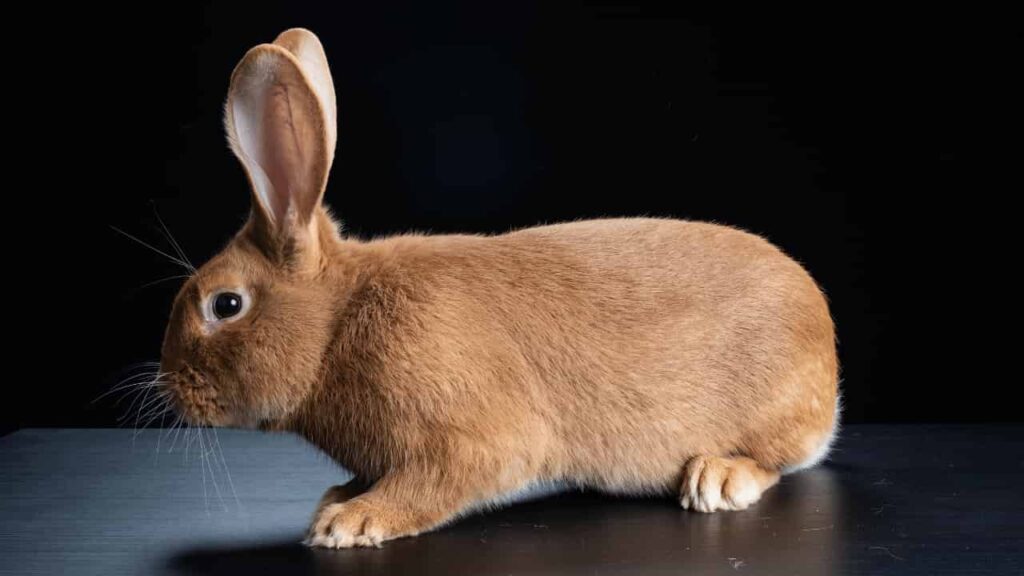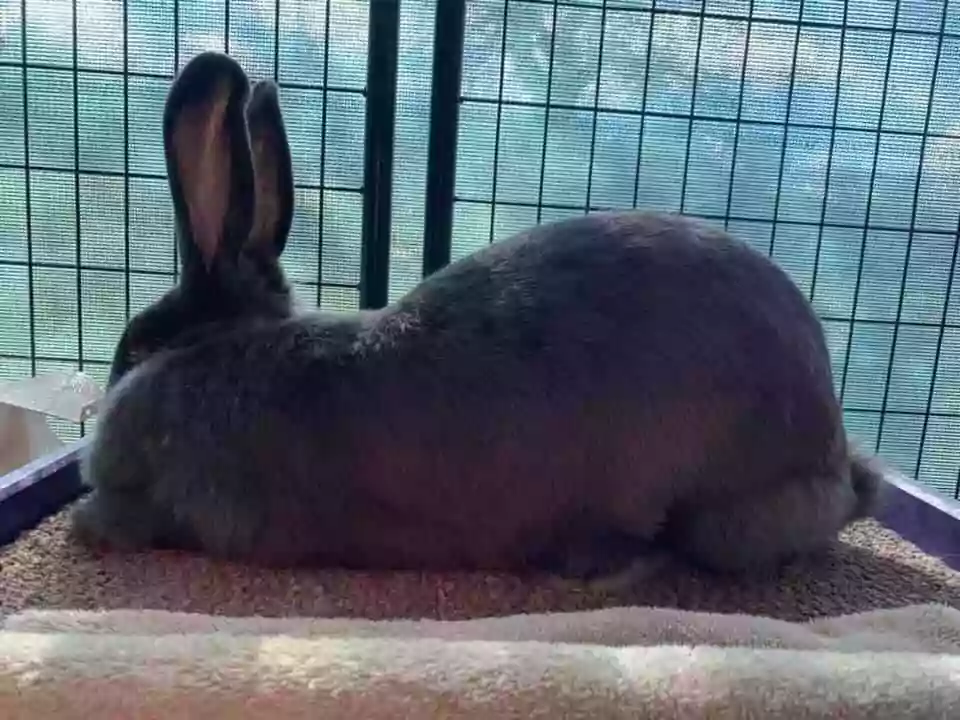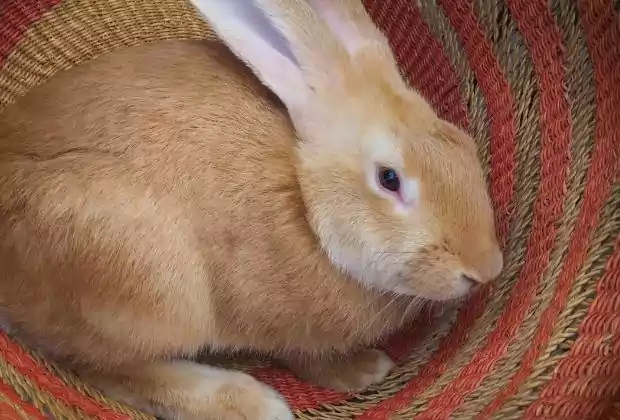“Flemish giant” as the name indicates, are large-sized rabbits with an average weight of 12pounds. So, they need more feed and poop more as compare to medium-sized rabbit breeds.
Luckily, rabbit poop used to be in the form of small and dry round balls that does not create a mess.
Flemish giant poop should be small, round, chickpea-sized beads. Normally, they are discrete and uniform in size with colors ranging from brown to greenish-black. On pressing, Flemish giant poop converts into a dusty mass with the finely ground hay particles inside.
Keen and regular observation of your rabbit poop can be beneficial to forecast any digestive problem and health concerns.
Here is an A to Z guide to answer all your queries about Flemish Giant Poop and many interesting facts.
Let’s start! ????
Do Flemish Giants Poop A Lot?
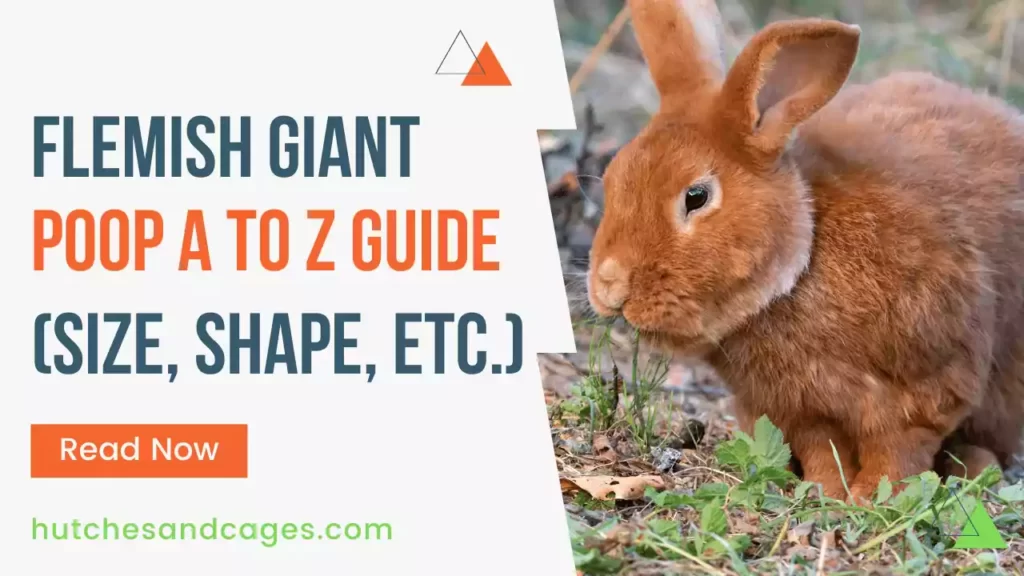
Yes, Flemish giants poop a lot as all other rabbits do.
According to wildlife experts and animal behavior scientists, a medium-sized rabbit can produce up to 300 fecal balls per day.
A high-fiber diet of rabbits is one of the reasons that rabbit poop more frequently than other pet animals.
Fibrous diets like hay are bulkier and have more undigested material. So, rabbits have to intake more feed to get their required energy.
Flemish Giants intake more feed to meet the requirement of their larger bodies, so they produce more fecal pellets than that of a medium-sized rabbit.
What Flemish Giant Poop Tells You About Their Health?
Observing the Poop of your rabbit can help you to know about her health.
The poop of a healthy flemish giant is of uniform size, discrete, and dry. Misshaped, sticky and squishy fecal pellets can be an indication of health problems.
Characteristics of a normal Flemish giant Poop are as follows:
| Size: | 8 to 12 mm, equal to the size of a chickpea |
| Shape: | Small oval to round pellets |
| Color: | Brownish to greenish-black |
| Texture: | Dry and firm with a dusty inside core |
| Smell: | No strong unpleasant smell |
Abnormal Poop-Abnormal Health:
How does the abnormal poop of a flemish giant look like? An abnormal rabbit poop will have misshaped fecal pellets, runny or pasty poop, and string-like poop, double poop, or diarrhea.
These poop types indicate a digestive problem, leading to poor digestion of feed and the situation can be aggravated consequently.
To avoid any health problems, it is advised that rabbits should be fed a balanced diet. And visit your vet for advice to keep your bunny healthy.
Can Flemish Giants be potty-trained?
Flemish giants are large size rabbits; however, they are docile and can be potty-trained.
It may take longer to train some individuals and the key is to confine them to a small space.
You can keep your rabbit in a cage with the litter box at one corner during the training period. The bottom of the litter box should be covered with a layer of fecal pellets, so the bunny can recognize it.
The neutering status of a rabbit also plays role in potty training. Fertile rabbits usually defecate and urinate more frequently to mark their boundaries.
A Flemish Giant Not Pooping, What To Do?
If your Flemish giant is not pooping, she may be suffering from constipation.
And if she has not passed the poop from the last 12 hours, it may be due to GIT stasis. Both of these situations should be considered serious and measures should be taken at the earliest.
Causes Of A Constipated Flemish Giant
- Fear and anxiety due to the attack of a predator or even a thunderstorm.
- Dehydration leading to the accumulation of fibrous feed-in GIT.
- Stress due to injuries and internal pain
- A foreign body can block the digestive tract.
Symptoms:
A Flemish giant, not pooping can show these symptoms:
- There will be a sudden drop in food intake.
- The rabbit will seem lethargic with loss of activity.
- A typical hunched back posture can be seen due to pain and gas accumulation in the GIT.
- Small misshaped poop initially and then reduced to no poop.
Prevention:
Constipation and GIT stasis in your bunny can be prevented by taking these measures
- Keep the rabbit hydrated by ensuring the availability of freshwater.
- Provide her a spacious home to exercise and hop around.
- Avoid any stress from predators, indoor housing can keep her safe.
- Provide her a balanced diet with free excess to fresh hay.
- Keep the plastic bags and threads away, which can clog your rabbit’s tract.
Flemish Giant Pooping A Lot, What To Do?
Flemish giants usually poop a lot, however, if you observe any abnormal smell, consistency, and shape of poop. It’s time to be attentive.
Very gross and pasty poop may be due to several reasons proper care should be taken on time.
You may encounter such conditions in your rabbits, so knowing about them can be helpful.
Causes:
- A low fiber diet can cause an imbalance of the bacterial population in GIT leading to mushy poops.
- High sugar and starch in diet can also disturb the pH of the digestive system and can cause acidity.
- Dental problems in rabbits make chewing painful and limit their ability to properly grind their food.
- Obesity in senior rabbits limit their movement and lack of exercise results in poor digestion and mushy poop.
Symptoms:
- Gross poop, with indigested feed particles and sticky
- Poopy butt due to strung fecal pellets with hind limbs
- Flystrike due to unhygienic condition
Prevention:
- Make sure the hygiene of your rabbit. Sometimes, more frequent baths may be required.
- Avoid the accumulation of poop in the cage, it may attract more flies.
- Provide your Flemish giant with a healthy diet and free access to hay.
- Avoid frequent treats and high sugar diets.
- Use fly repellents to avoid the flystrike.
Why My Flemish Giant Rabbit Is Eating His Poop?
If you find your Flemish giant eating his poop, she is not doing this due to some disease. It’s normal for rabbits to eat their poop.
Cecotropes:
Rabbits produce a type of poop, called cecotropes, which is not completely digested and have some nutrient-rich components.
Rabbits usually eat cecotropes when they come out of their anus, so mostly we can’t see them.
Cecotropes are a little mushy and found in the form of clusters. They have a strong unpleasant smell and convert into a smear shape on pressing.
Normally, a rabbit produces few cecotropes and rabbits eat them to meet their nutrient needs. However; if you are finding cecotropes frequently, you may need to revamp your rabbit’s nutrition.
Can You Catch Diseases From A Flemish Giant’s Poop?
There is no such incidence reported that rabbit poop can transmit disease to humans. However; rabbit poop can have parasites like nematodes and tapeworms. These parasites are host-specific and not found to be transmitted to humans.
Taking personal hygiene measures like washing and sanitizing your hands after touching your pets is recommended.
Why Is My Bunny’s Poop White?
Normally the color of rabbit poop is brown to black. However, you may see some white fecal pellets in the litter box. There may be one for the following two reasons.
- Rabbit poop is covered by a thin layer of mucus membrane.
- Rabbit urinate on these fecal pellets and calcium and uric acid present in the urine gave white color to these fecal pellets.
Do Flemish Giants Stink?
No, Flemish giants don’t stink. All rabbits including Flemish giants keep themselves clean and tidy. If you keep their cage and surroundings clean, you will find their hair coat clean and shiny.
Secondly, rabbits groom themselves regularly to get rid of their shedding hairs and remove the strung mud and feces. So, rabbits don’t stink normally.
Frequently Asked Questions
Here are some frequently asked questions about flemish giant poop:
My Flemish Giant Rabbit’s Poop Is Soft. Is It Ok?
Rabbit’s poop should not be soft and sticky. If your Flemish giant is producing soft poop, it may indicate that you are not providing sufficient hay or you are giving high sugar treats to your bunny. It can also be due to parasitic infestation, so taking your vet’s advice is recommended.
What Does Rabbit Poop Look Like?
Rabbit’s poop looks like small, brown to black colored beads. Normally, their poop is not gross like most pet animals and is found in the form of discrete tiny balls. A healthy rabbit poop should be dry, of uniform size, and not having a strong smell.
How Big Are Flemish Giants Poop?
Flemish giant poop may be a little bit due to his large size and more feed intake. However, it is not large enough to handle. A rabbit can produce 200 to 300 fecal pellets per day so; a Flemish giant can produce too.
Is Flemish Giant’s Poop Toxic?
No, Flemish giant poop is not toxic. A rabbit poop usually consists of very finely ground undigested fiber particles and nitrogenous waste. So, there is no such thing in a rabbit’s poop that can cause toxicity.
Do Flemish Giants Eat Their Poop?
Yes, a flemish giant can eat their poop as other rabbits do. There is one kind of rabbit poop called cecotropes which has undigested material and a lot of nutrients. So rabbits eat cecotropes after passing them through the anus to meet their nutrient requirements.
What Do Healthy Rabbit Droppings Look Like?
Healthy rabbit droppings look like uniform chickpea-sized balls. They are discrete and dry, not sticky to the surfaces. When pressed against a surface, rabbit poop converts into a dusty mass and does not have a strong smell.
What We Can Know From Sick Rabbit Poop?
Your rabbit poop can tell you about her health. If your rabbit is producing squishy, sticky, and smelling poop, she is not having a normal digestive function. An unbalanced diet may be one of the reasons. In the case of parasitic infestation, you can find tiny parasitic larvae in their poop.
Why Is Bunny Poop Round?
The round shape of poop in rabbits and other animals is due to the rhythmic movements of the large intestine, particularly the cecum. The rhythmic movements of the digestive tract push the food away from the mouth and the large intestine pinch off to convert it into small balls.
Can Flemish Giants Live Indoors?
Flemish giants used to be very docile and have good temperaments. Due to their compliant nature, they can live indoors. Due to their large size, you have to make a bit large cage for your Flemish giant so she does not feel confined in it. And provide her sufficient indoor space to walk and exercise around.
Final Words
Flemish giant is a large rabbit breed and has the largest rabbit of the species. So a Flemish giant poop can be comparable to her body size.
However, they are assertive and can be potty-trained to keep the proximity clean. With all that said, Flemish giant poop can be used as organic fertilizer for your garden. By mixing with the vegetable and fruit peels, it can also be a good source for composting.
SmallPetsX.Com does not provide veterinary advice. Our aim to help small pet owners understand their pets a little better so that they can provide their pets with the life they deserve. All content is therefore for informational purposes only. If you're concerned about the health of your pet you should seek medical advice from a vet.

